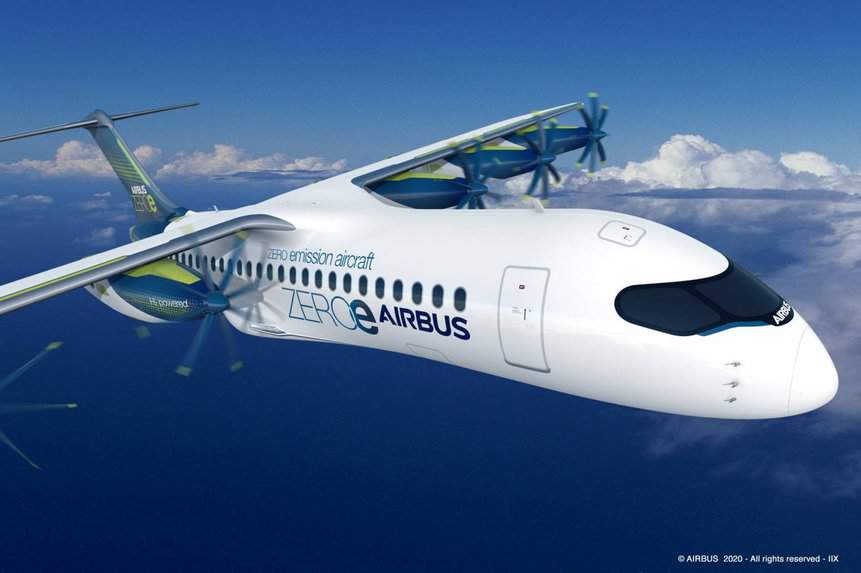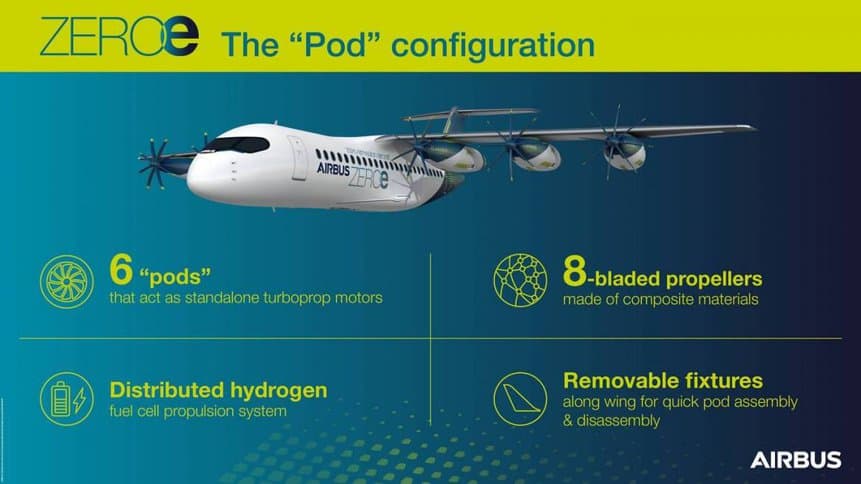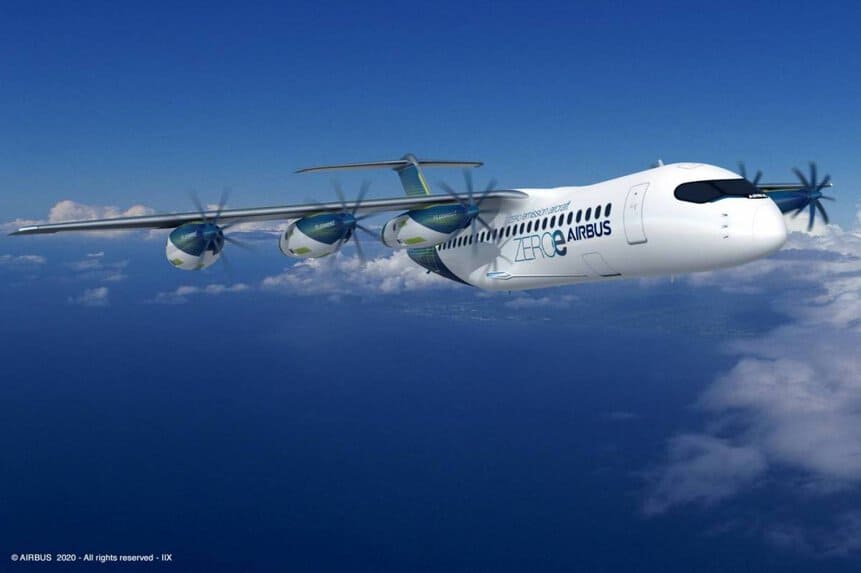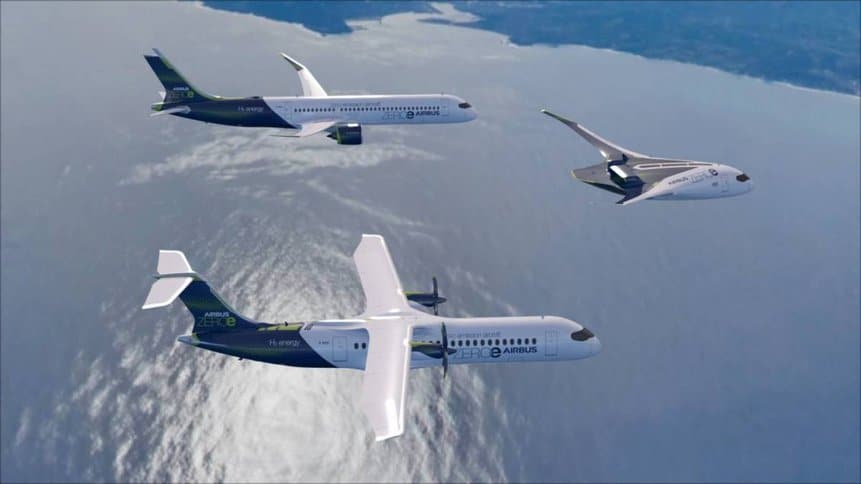Airbus presented a new technology adaptation of hybrid engines in airplanes, using the same concept presented a few weeks ago, with the burning of hydrogen.
It's unlike anything seen on the runways today: the "pod" configuration - one of several being conceptualized as part of the ongoing research and development on the ZEROe concept aircraft - features an array of autonomous propulsion systems based on the technology of hydrogen fuel cell.
Today, Airbus is conducting studies to determine how scalable the “pod” configuration, among others, could be for large commercial aircraft.
This concept is a development of another, previously presented by Airbus, of using hydrogen propulsion as a way to create planes with very low CO2 emissions, in the case of combustion of Hydrogen with Oxygen, zero emission.
The Airbus alternative is presented as a viable solution, while battery development makes slow progress in the field of electric planes and cars.
The “Pods” system basically works as a way to adapt a propulsion system on any compatible aircraft, in addition to the hydrogen storage cells.
Each “pod” is essentially an autonomous propeller propulsion system powered by hydrogen fuel cells. Consisting of the following elements:
- A propeller;
- Electric motors;
- fuel cells;
- Power electronics;
- Liquid hydrogen tank (LH2);
- A cooling system;
- A set of auxiliary equipment.
Hydrogen and air are supplied to fuel cells to generate electrical current. The electronics carry out a hydrolysis reaction, allowing the generation of an electric current to power the electric motors. Thanks to this energy, the electric motor starts working, turning the propeller.
The eight-blade propellers, made from composite materials, are shaped to provide additional thrust during the takeoff and climb phases of flight. The advanced design is expected to lead to greater efficiency and performance.
Smaller experimental hydrogen aircraft with up to 20 seats can rely on a traditional twin-engine fixed-wing configuration. However, the greater the passenger capacity and the greater the range, a different solution is required.
That's why Airbus is studying a variety of configurations, including "pods", to determine which option has the potential to expand to larger aircraft.
“This 'pod' configuration is a great starting point to fuel further research into how we can expand hydrogen technology to commercial aircraft. This is one option, but many others will be conceptualized before we make a final selection, a decision that is expected in 2025.”, Glenn Llewellyn, Vice President, Zero Emissions Aircraft.
Another striking feature of the “pod” configuration is its removable accessories. This means that each “pod” can be disassembled and reassembled in record time. This approach can provide a practical and quick solution for maintaining and potentially refueling hydrogen at airports.
Although advanced in its design, the Airbus “pod” configuration still requires a lot of work to determine whether it can be a suitable solution. To date, it remains one of many exciting technology options that Airbus engineers are considering as they work to launch the ZEROe programme.
An Airbus patent application for the “pod” configuration will be published in December 2020, 18 months after its initial filing. This highlights that Airbus has been working on ZEROe since at least 2018.
Several more patent applications are expected to be filed in the coming months and years as R&D continues on the ZEROe program.
Do you want to receive our news firsthand? Click Here and be part of our Group on Whatsapp or Telegram.





